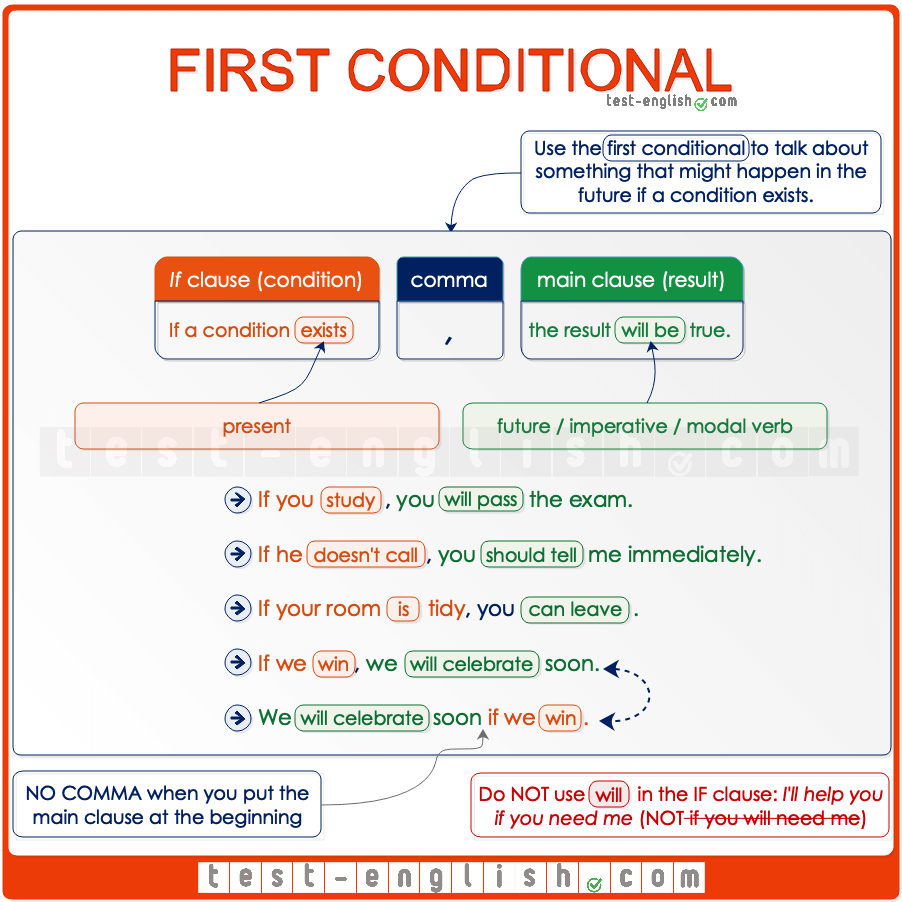Μάθημα : ΑΓΓΛΙΚΑ Α' ΓΥΜΝΑΣΙΟΥ
Κωδικός : 0501447124
Unit 4 Ecofriendly
The imperative – Grammar chart

Form
The form of the verb used for the imperative is the base form of the verb (=the infinitive without to). There is no subject.
The negative imperative is made with do not or don’t + infinitive (no subject).
Use
You can use the imperative to:
Give instructions
- Open the package carefully.
- Connect the cable to the plug.
Give orders
- Fasten your seatbelt.
- Stop talking!
- Run!
Offer something or invite someone to something
- Have some cookies.
- Come and sit with us.
Give advice
- Get some sleep.
- Tell her how you feel.
- Go and have fun.
Give warnings
- Don’t touch that cable.
- Please, Stop the car!
Let’s
Make suggestions
You can use the form let’s + verb or let’s not + verb to make suggestions.
(+) It’s very hot today. Let’s go to the swimming pool.
(-) Let’s not go out today. I’m very tired.
First conditional – Grammar Chart

If clause and main clause
All conditional sentences have two parts: the if clause and the main clause. It doesn’t matter which clause comes first, but when the if clause comes first, we should put a comma after it.
- If it rains, we’ll stay home
- We’ll stay home if it rains.
If + present, future
In the first conditional, the verb in the if clause is present, and the verb in the main clause is future.
- If you don’t go to sleep, you’ll be very tired tomorrow.
The if clause may have a present or a future meaning, but the verb is always in the present (NOT future)
- If you will be a good boy tomorrow, mummy will buy you a present.

- If you are a good boy tomorrow, mummy will buy you a present.

Main clause: will, modal verb, imperative
In the main clause, we can also use may, might, can, must, should instead of will.
- If he doesn’t train harder, he may/might lose the championship.
- If your room is tidy, you can leave.
- If you want to lose weight, you must/should eat less sugary things.
We can also use an imperative instead of will.
- If you arrive after midnight, ring me on my mobile.
Can, can’t – Grammar chart

Can, can’t – Form
Infinitive without to
We use can + infinitive without to.
- I can swim.

- I can to swim.

- We can’t come.

- We can’t to come.

Don’t use -s after he/she/it
We don’t add -s after he/she/it. We use can for all persons.
- He can swim.

- He cans swim.

Don’t use do/don’t
Can is an auxiliary verb and has a negative and interrogative form. We don’t use do/don’t to make questions and negatives.
- Can you swim?

- Do you can swim?

- He can’t swim.

- He don’t can swim.

Can, can’t – Use
Ability
We use can/can’t to talk about ability in the present (=things that we know how to do).
- Laura can sing very well.
- I can’t speak German.
Possibility
We use can/can’t to ask for permission or to say if something is possible or not.
- Can I sit here?
- You can’t vote if you aren’t 18 years old.
- I’m sorry, but I can’t come to the party.
Ask for something
We use can/can’t to ask for something and to order in bars, restaurants, shops, etc.
- Can you lend me some money?
- Can I have some water, please?
- Can I have a burger and a soda?


